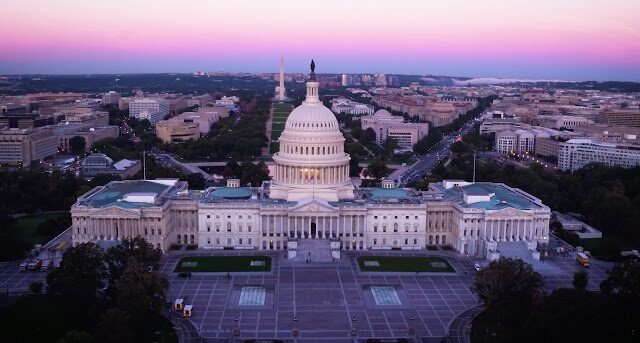The federal budget proposal, released late Friday May 30th, 2025, outlines deep structural changes to federal housing programs, with a clear shift toward state control, program consolidation, and funding reductions. It’s important to note that this is a proposal at this point and not law. It will face scrutiny and potential revision in Congress but we do need to ensure affordable housing in California is protected. Our analysis of the proposal turned up a lot of negatives and some potential positives and we’ve highlighted those below.
USDA Rural Development (RD) Programs
✅ Positive Developments
- Section 521 Rental Assistance: Increased to $1.715 billion (up from $1.642B), helping to stabilize over $9 billion in USDA multifamily loans.
- Section 538 Loan Guarantees: Maintained at $400 million, supporting new rural rental housing development.
- SARA (Decoupling Pilot): Continued, allowing rental assistance to remain even after mortgage maturity.
❌ Negative Impacts
- Section 542 Vouchers Eliminated: This removes a critical safety net for tenants in properties exiting affordability.
- Section 515 and MPR Cuts: Funding for Section 515 drops to $50M (from $60M), and MPR to $15M (from $34M), reducing support for preservation and rehab of aging rural housing.
- Single-Family Direct Loans Eliminated: This could limit homeownership access in rural areas.
- Staff Reductions: May slow program delivery and oversight.
HUD is facing major structural shifts in their programs. First, under the proposed legislation, the Housing Choice Vouchers, Public Housing, PBRA, Section 202, and Section 811 would be consolidated into a $31.79B State Rental Assistance Block Grant. That represents a $26.8B Cut in HUD rental Assistance overall.
Additionally, a two-year Cap on rental assistance for able-bodied adults, the elimination of CDBG and HOME programs which are vital for local affordable housing and community development are areas of concern. States would have more flexibility but less federal oversight, which could lead to inconsistent protections and reduced tenant rights. The chart below sets out what we see as the impacts on affordable housing in California and beyond.
📉 Potential Impacts on Affordable Housing
| Area | Positive | Negative |
| Developers | LIHTC expansion (via reconciliation bill) | Uncertainty in funding streams |
| Urban/Suburban Housing | State flexibility | Major HUD cuts, loss of HOME/CDBG |
| Tenants | Elderly/disabled prioritized | Time limits, fewer protections |
| Rural Housing | More RA funding, continued 538 loans | Cuts to 515, MPR, 542 vouchers, staff |
The proposed $26.8 billion cut to HUD rental assistance and elimination of programs like HOME and CDBG would severely impact California, which relies heavily on these funds to support low-income renters and local housing development and the shift to a State Rental Assistance Block Grant could create administrative burdens and funding gaps, especially in high-cost states like California where housing needs are acute. While California has some insulation and a robust housing plant, the state may struggle to maintain current levels of housing support without federal backing. Specifically we worry that vulnerable populations—especially those in urban centers like Los Angeles and San Francisco —could face increased housing insecurity.
We also have grave concerns about how rural housing in California will fare given the elimination of Section 542 vouchers and cuts to Section 515 and MPR could hinder preservation and affordability in rural areas like the Central Valley and Northern California. On the upside, USDA programs like Section 521 Rental Assistance are seeing modest increases, which is good news for rural California communities.
According to the California Budget & Policy Center, The state is facing a $7.5 billion deficit and is proposing $5 billion in cuts, including to programs for older adults and people with disabilities. The federal budget’s instability is cited as a key reason for California’s more cautious fiscal approach.
In response, California lawmakers have introduced AB 736 and SB 417, proposing a $10 billion bond to help build/preserve 135,000+ affordable homes, create 35,000+ new homes for very low-income families, and support farmworker and tribal housing. This bond is seen as a counterbalance to federal retrenchment, aiming to sustain momentum in affordable housing development and CCAH has signed on in strong support.
📣 Your Voice is Critical for California’s Housing Future
The proposed FY 2026 federal budget and the sweeping “One Big Beautiful Bill” pose serious risks to affordable housing across California. From deep cuts to HUD rental assistance to the elimination of vital programs like HOME and CDBG, these changes could destabilize housing for thousands of families, seniors, and rural residents.
But this is not final. Congress holds the power to shape the outcome—and they need to hear from you.
✅ What You Can Do:
- Contact your Senators and Representatives today. Urge them to protect and strengthen affordable housing programs.
- Stay informed: Join us as a member and work with us to raise your voice with ours.
- Share your story: Let lawmakers know how these programs impact your community and why they must be preserved.
🛑 Silence is not an option. The future of affordable housing in California depends on our collective action—now more than ever.
👉 Click here to contact your senator
👉 Click here to contact your representative
